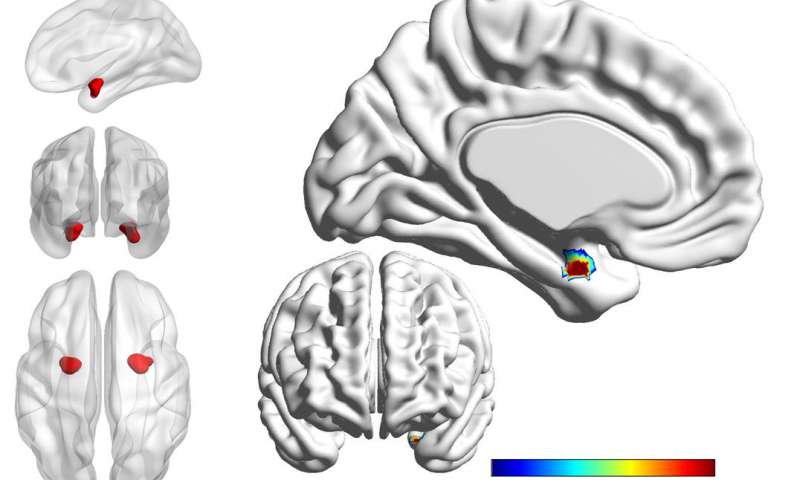Bipolar disorder, historically termed manic-depressive illness, is a complex mental health condition marked by significant mood fluctuations, encompassing emotional highs (mania or hypomania) and lows (depression). While manic episodes are often conspicuous, the depressive phases can be equally, if not more, debilitating, profoundly affecting an individual’s daily functioning and quality of life. This article delves into the characteristics of depression within the context of bipolar disorder, exploring its symptoms, underlying causes, and available treatment modalities.

The Dual Facets of Bipolar Disorder
Bipolar disorder is characterized by alternating periods of mania/hypomania and depression. Understanding these contrasting states is crucial for accurate diagnosis and effective management.
Manic and Hypomanic Episodes
Mania involves elevated or irritable moods, increased energy, and heightened activity levels. Individuals may exhibit impulsive behaviors, rapid speech, and a decreased need for sleep. Hypomania presents similarly but is less severe and doesn’t cause significant impairment in social or occupational functioning.
Depressive Episodes
Depressive episodes in bipolar disorder mirror those of major depressive disorder, including persistent sadness, loss of interest in previously enjoyable activities, changes in appetite and sleep patterns, fatigue, feelings of worthlessness or excessive guilt, and recurrent thoughts of death or suicide. These symptoms can lead to substantial impairments in daily life.
Types of Bipolar Disorder
Bipolar disorder is categorized into several types, each defined by the pattern and severity of mood episodes.
Bipolar I Disorder
This type is characterized by at least one manic episode, which may be preceded or followed by hypomanic or depressive episodes. Manic episodes can be severe and may necessitate hospitalization.
Bipolar II Disorder
Defined by a pattern of depressive episodes and hypomanic episodes, without the full-blown manic episodes typical of Bipolar I. Depressive episodes in Bipolar II can be prolonged and severe, leading to significant impairment.
Cyclothymic Disorder
A milder form of bipolar disorder, cyclothymia involves periods of hypomanic symptoms and periods of depressive symptoms lasting for at least two years (one year in children and adolescents). However, the symptoms do not meet the diagnostic requirements for a hypomanic episode and a depressive episode.
The Impact of Depressive Episodes in Bipolar Disorder
Depressive episodes in bipolar disorder can be particularly challenging. Individuals may experience profound sadness, hopelessness, and a lack of energy. These episodes can impair one’s ability to function in daily activities, affecting work performance, relationships, and overall quality of life. The risk of suicide is also elevated during depressive episodes, underscoring the need for effective treatment and support.
Causes and Risk Factors
The exact cause of bipolar disorder remains elusive, but a combination of genetic, biological, and environmental factors is believed to contribute.
Genetic Factors
A family history of bipolar disorder increases the risk, suggesting a hereditary component. However, specific genes associated with the disorder have yet to be conclusively identified.
Biological Factors
Neurotransmitter imbalances, particularly involving serotonin, norepinephrine, and dopamine, are implicated in mood regulation and may play a role in bipolar disorder.
Environmental Factors
Stressful life events, trauma, and significant life changes can trigger mood episodes in susceptible individuals. Disruptions in sleep patterns and circadian rhythms are also linked to mood instability.
Diagnosis
Diagnosing bipolar disorder involves a comprehensive evaluation, including a detailed psychiatric history, assessment of symptoms, and ruling out other medical conditions. It’s essential to distinguish bipolar depression from major depressive disorder, as treatments may differ. Misdiagnosis can lead to inappropriate treatment, potentially exacerbating symptoms.
Treatment Approaches
Effective management of bipolar disorder typically involves a combination of medication, psychotherapy, and lifestyle modifications.
Pharmacotherapy
Mood stabilizers, such as lithium and anticonvulsants, are commonly prescribed to manage mood swings. Antidepressants may be used cautiously due to the risk of triggering manic episodes. Atypical antipsychotics can also be beneficial, particularly in managing acute manic or mixed episodes.
Psychotherapy
Interpersonal and Social Rhythm Therapy (IPSRT) focuses on stabilizing daily rhythms and improving interpersonal relationships, which can help prevent mood episodes. Cognitive-behavioral therapy (CBT) is also effective in addressing negative thought patterns and behaviors associated with depression.
Lifestyle Modifications
Maintaining a regular sleep schedule, engaging in regular physical activity, and managing stress through mindfulness or relaxation techniques can support mood stability. Avoiding alcohol and recreational drugs is also crucial, as they can exacerbate mood symptoms.